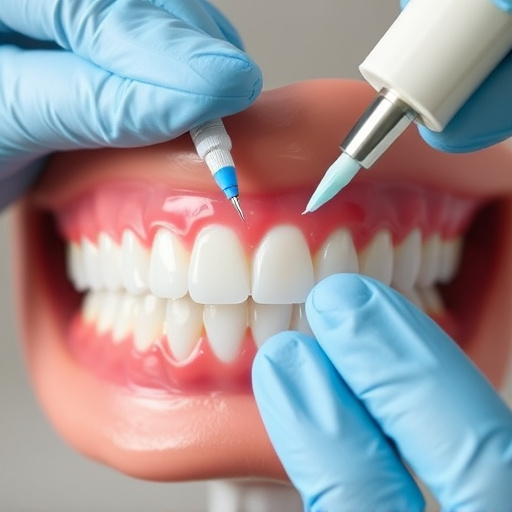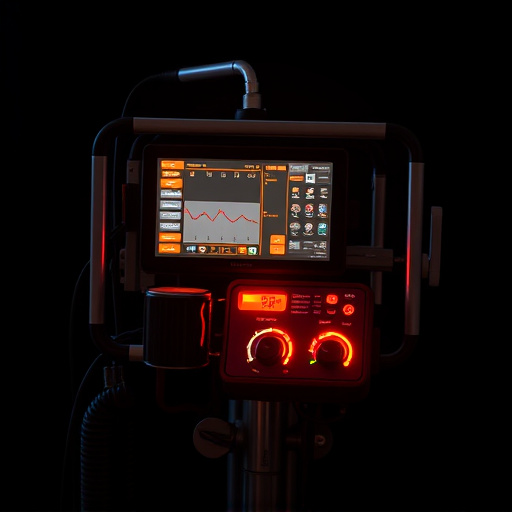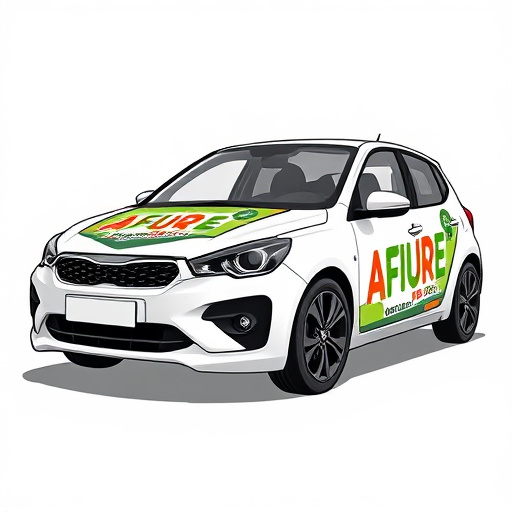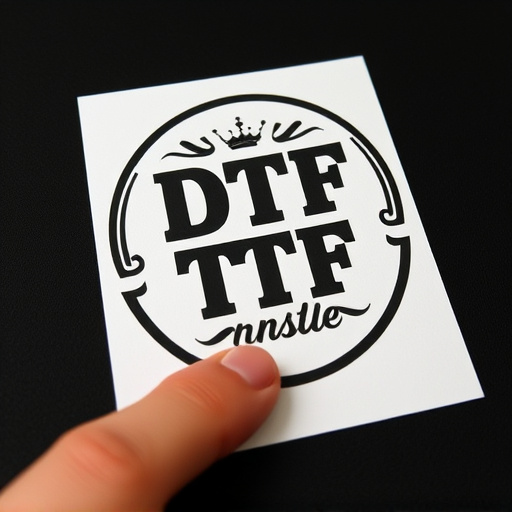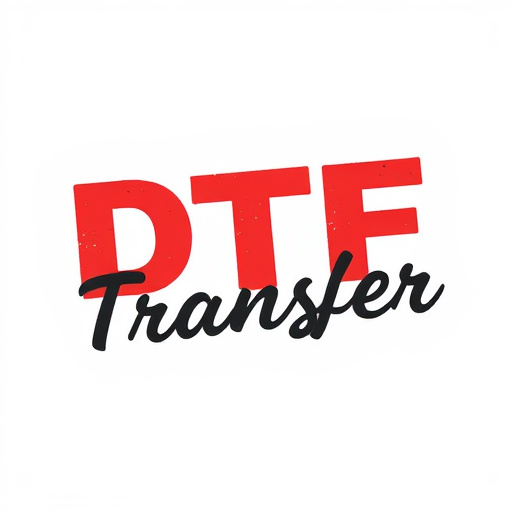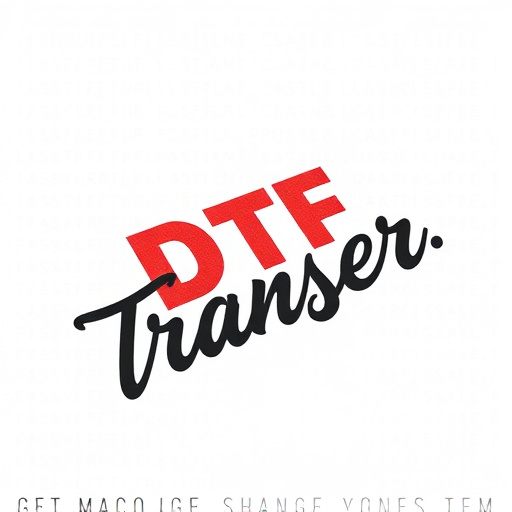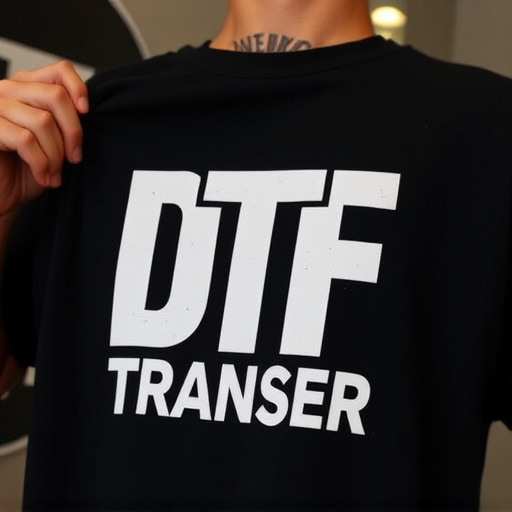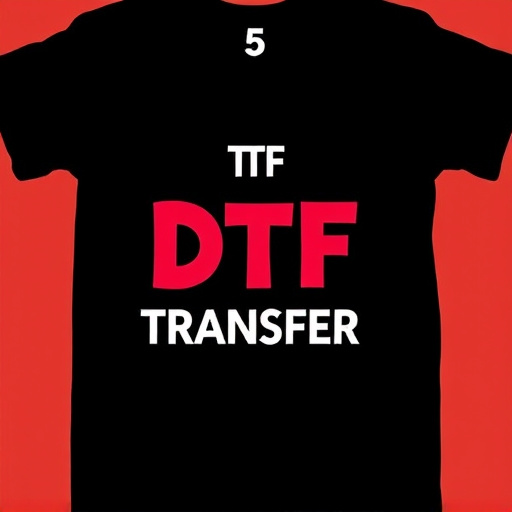Direct-to-Film (DTF) transfer is a cutting-edge printing method eliminating traditional vinyl cutting machines. Using specialized printers, it applies ink directly to thin, flexible film, which can be heat-pressed onto various substrates for high-quality, vibrant, and durable prints. DTF streamlines production, offers intricate design capabilities, and reduces waste, making it ideal for small batches, on-demand printing, and custom products like apparel and signage. Compared to heat transfer vinyl, DTF provides crisper lines, better color vibrancy, enhanced durability, and cost savings over time, despite a higher initial investment.
Direct-to-film (DTF) transfer and heat transfer vinyl applications are two popular methods for applying graphics and designs to various surfaces. This article delves into the comparison between these techniques, exploring their unique features, advantages, and disadvantages. From print quality and durability to cost-effectiveness, we analyze which method yields better results for different needs, helping businesses make informed decisions about their DTF printing or heat transfer vinyl choices.
- Understanding Direct-to-Film (DTF) Transfer: A Overview
- Heat Transfer Vinyl Applications: Traditional Method
- Advantages of DTF Transfer Over Conventional Vinyl Cutting
- Print Quality and Detail Comparison: DTF vs Heat Transfer
- Durability and Longevity: Which Offers Better Results?
- Cost-Effectiveness Analysis: DTF Printing vs Heat Transfer Vinyl
Understanding Direct-to-Film (DTF) Transfer: A Overview

Direct-to-Film (DTF) transfer is a cutting-edge application that has revolutionized the way we produce custom prints and designs. This innovative process eliminates the need for traditional vinyl cutting machines, allowing for direct printing on various film materials. DTF involves using specialized printers to apply ink directly onto the surface of a thin, flexible film, which can then be heat-pressed onto diverse substrates like t-shirts, mugs, or even walls. The result is high-quality, vibrant prints that offer exceptional durability and a range of color options.
DTF Printing provides several advantages over conventional methods. It streamlines the production process, making it faster and more cost-effective, especially for small batch orders or on-demand printing. DTF also enables intricate designs and fine details to be reproduced accurately, appealing to artists, designers, and businesses seeking unique and personalized products. With its versatility and ease of use, DTF Transfer has become a game-changer in the world of custom printing, allowing for endless creative possibilities with DTF prints.
Heat Transfer Vinyl Applications: Traditional Method

Heat Transfer Vinyl Applications: Traditional Method
In the traditional DTF transfer process, designs are first created digitally using specialized software. These designs are then printed onto a temporary paper or film using a printer that supports direct-to-print capabilities. The printed medium acts as a carrier for the design, which is composed of multiple layers of vinyl ink and a release agent. Once the printing is complete, the DTF transfer is carefully applied to the desired surface—whether it’s fabric, wood, plastic, or another material—through heat and pressure. This method allows for intricate details and vibrant colors in the final prints, making it popular for creating custom T-shirts, totes, and a variety of promotional products.
The traditional DTF transfer process offers several advantages. It enables complex designs with fine lines and detailed elements, ensuring high-quality outcomes. Moreover, this method is relatively cost-effective for small to medium-sized batches, making it accessible to businesses and individuals alike. However, the process can be time-consuming due to the printing and application stages, requiring precision and skill to achieve the best results.
Advantages of DTF Transfer Over Conventional Vinyl Cutting

The Direct-to-Film (DTF) transfer process offers several advantages over conventional vinyl cutting methods. One of its key benefits is the ability to produce high-quality, precise prints directly on various materials, including fabrics and plastics. DTF Transfer technology eliminates the need for intricate cutting designs, as it applies heat and pressure to fuse ink onto the surface, ensuring vibrant and long-lasting DTF prints. This makes it an ideal choice for creating complex graphics, texturized effects, and even photo-realistic images on a range of substrates.
Additionally, DTF Printing provides greater flexibility in design and application. It allows for the production of detailed, intricate patterns without the limitations often associated with vinyl cutting. This makes it particularly advantageous for custom apparel, signage, and promotional products, where unique and visually appealing DTF prints are desired. The efficiency and precision of DTF Transfer also reduce waste, making it an eco-friendly alternative.
Print Quality and Detail Comparison: DTF vs Heat Transfer
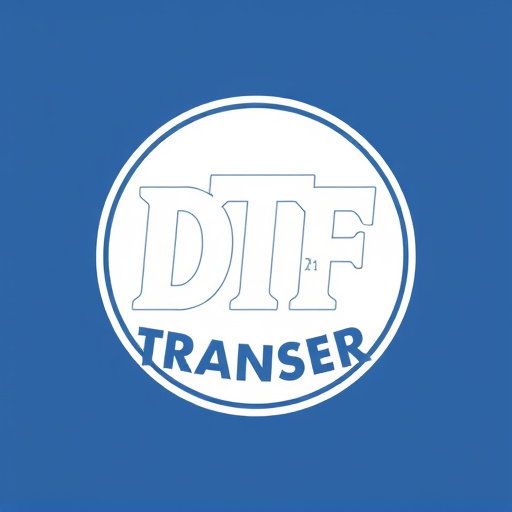
When comparing print quality and detail between Direct-to-Film (DTF) transfers and heat transfer vinyl applications, DTF printing stands out for its exceptional resolution and vibrant colors. DTF prints are known for their sharp, detailed designs that can include intricate patterns, fine lines, and complex gradients—making it ideal for creating visually stunning graphics. This method directly applies the ink onto the film, eliminating the need for a separate carrier sheet, which allows for more precise color reproduction and a smoother overall finish.
On the other hand, heat transfer vinyl applications, while still producing high-quality prints, may not match DTF’s level of detail and color accuracy. The process involves transferring the design onto a flexible substrate via heat and pressure, which can sometimes result in slightly less crisp lines and potentially reduced color vibrancy. However, heat transfer vinyl remains a popular choice due to its versatility, ability to apply designs to various materials, and cost-effectiveness compared to DTF transfers.
Durability and Longevity: Which Offers Better Results?

When comparing direct-to-film (DTF) transfer with heat transfer vinyl applications, durability and longevity are key factors to consider. DTF printing directly applies ink to a substrate, creating a robust bond that can withstand wear and tear over time. This method often yields high-quality, long-lasting prints, making it ideal for items intended for frequent use or exposure to elements.
On the other hand, heat transfer vinyl involves applying a vinyl layer with printed design onto a fabric or material using heat and pressure. While this process can produce vibrant and detailed DTF prints, the bond between the vinyl and substrate may not be as durable as direct printing. Heat transfer vinyl is more suitable for applications where the final product doesn’t require extreme durability, such as promotional items or clothing that will see less regular use.
Cost-Effectiveness Analysis: DTF Printing vs Heat Transfer Vinyl
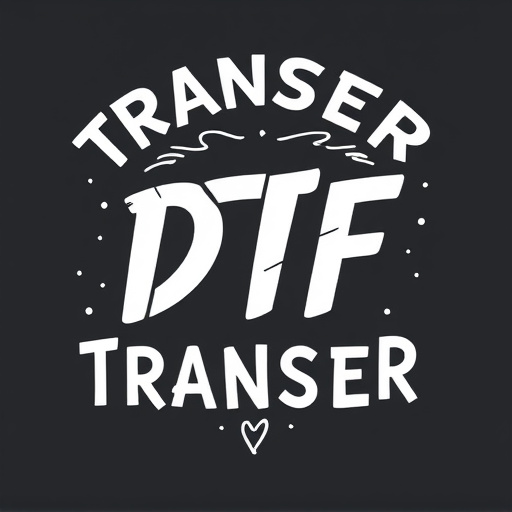
Direct-to-film (DTF) printing and heat transfer vinyl (HTV) are two popular methods for creating custom prints on various surfaces, each with its own advantages and cost considerations. When conducting a cost-effectiveness analysis, DTF Printing stands out as a compelling option. DTF Transfer offers significant savings by eliminating the need for separate application steps and complex setup processes associated with heat transfer vinyl. With DTF, designs are printed directly onto the final medium, reducing material waste and labor costs.
Moreover, DTF prints often boast superior longevity and durability compared to HTV applications. This enhanced quality means that DTF Transfer may require less frequent replacements, further contributing to long-term cost savings. While initial investment in DTF equipment may be higher, the streamlined process and superior print quality make it a financially prudent choice for businesses seeking an efficient, cost-effective solution without compromising on aesthetics or sustainability.




